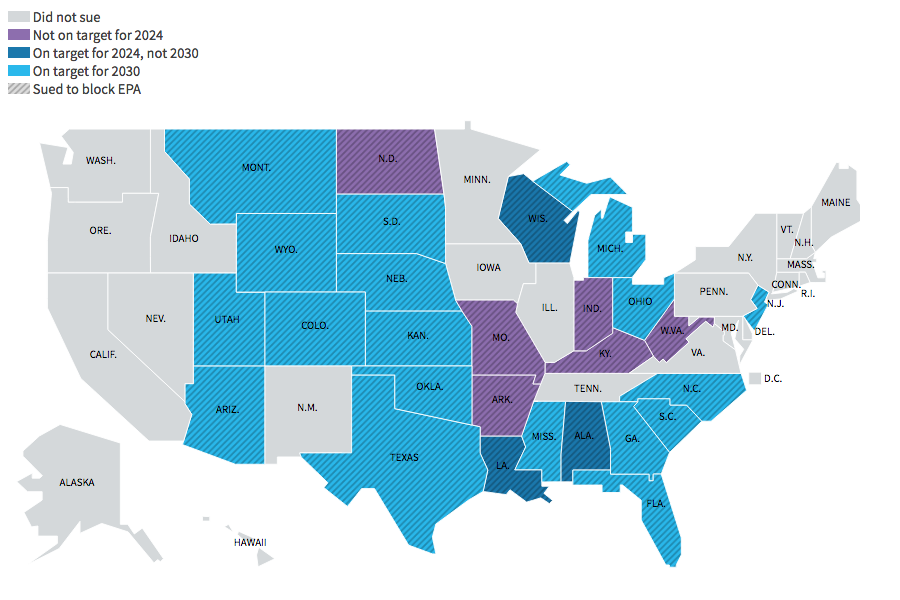Why 27 states are fighting federal clean air goals, but meeting them anyway
Loading...
Next week, the D.C. Circuit Court is scheduled to hear an appeal from 27 states claiming the Environmental Protection Agency overstepped its bounds with regulations that seek to reduce American power plant carbon emissions by a third by 2030.
The states, which are run predominantly by Republican governors, argue President Obama’s so-called “Clean Power Plan” imposes an undue burden. But a majority of them are on track to hit the prescribed targets anyway.
“It’s a great sign that the market has already shifted and people are invested in the newer technologies, even while we are in litigation,” Gina McCarthy, the EPA administrator, told Reuters, noting the agency has seen carbon reductions earlier than anticipated.
The states argue, however, that their case is less about the end goal than it is about the means and manner by which the federal government sought to achieve it.
“We don’t have anything against clean air,” Colorado Attorney General Cynthia Coffman told Reuters. “That really doesn’t factor into my decision to say the federal government has gone beyond its legal authority.”
Oklahoma Attorney General Scott Pruitt described Mr. Obama’s plan as a form of federal “coercion and commandeering,” and he said his state should have “sovereignty to make decisions for its own markets.”
Colorado and Oklahoma are both among the 21 plaintiff states already expected to comply with the plan’s 2030 emissions targets.
“This used to be a bipartisan issue,” Obama told an audience at Georgetown University on a hot summer day in 2013, when he announced plans to have the EPA draft carbon standards for American power plants.
“We limit the amount of toxic chemicals like mercury and sulfur and arsenic in our air or our water, but power plants can still dump unlimited amounts of carbon pollution into the air for free,” Obama said. “That’s not right, that’s not safe, and it needs to stop.”
The White House finalized its plan last year as a key component of US commitments under the Paris Climate Agreement. But the US Supreme Court halted implementation of the rule, pending resolution of the states’ litigation.
A three-judge panel had been scheduled to hear the case in June, but whichever side lost was expected to appeal, so the Circuit Court opted to hear the case “en banc.” By using its discretion to skip a step, the appellate judges could shave months off the time that passes before this case lands at the Supreme Court, as The Christian Science Monitor reported in May.
If the plan were to be struck down, it would become more difficult for the United States, one of the world’s largest emitters of harmful greenhouse gasses, to meet its carbon-cutting goals.
The EPA has expressed confidence that it will prevail in court “because the rule rests on strong scientific and legal foundations.”
Regardless of the court’s decision, American energy policy is sure to maintain its political charge, with Republicans overwhelmingly opposed to the Democratic administration’s efforts to reduce carbon emissions.
“When I ran for office, I promised I would do everything in my power to protect coal miners’ jobs,” West Virginia Attorney General Patrick Morrisey said in a statement. “I have followed through on that promise.”
Material from Reuters was used in this report.








